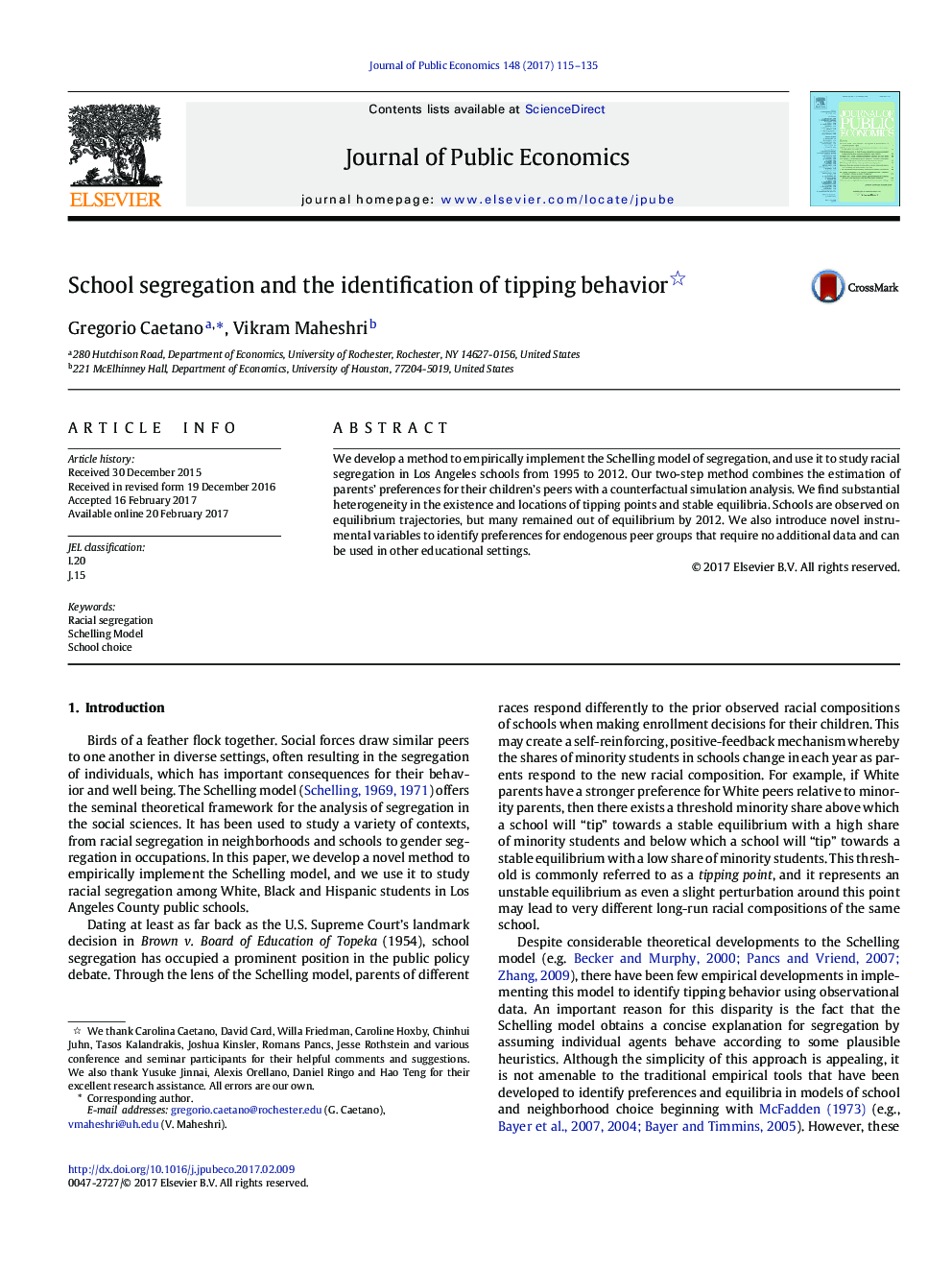| Article ID | Journal | Published Year | Pages | File Type |
|---|---|---|---|---|
| 5101849 | Journal of Public Economics | 2017 | 21 Pages |
â¢The Schelling Model of Segregation is empirically implemented on LA County schools.â¢Parents' demand responses to peers' races are estimated using novel IVs.â¢Tipping behavior is widespread and diverse. Not all schools have tipping points.â¢Many schools are far out of equilibrium.â¢Segregation can be affected by manipulating exogenous school amenities.
We develop a method to empirically implement the Schelling model of segregation, and use it to study racial segregation in Los Angeles schools from 1995 to 2012. Our two-step method combines the estimation of parents' preferences for their children's peers with a counterfactual simulation analysis. We find substantial heterogeneity in the existence and locations of tipping points and stable equilibria. Schools are observed on equilibrium trajectories, but many remained out of equilibrium by 2012. We also introduce novel instrumental variables to identify preferences for endogenous peer groups that require no additional data and can be used in other educational settings.
